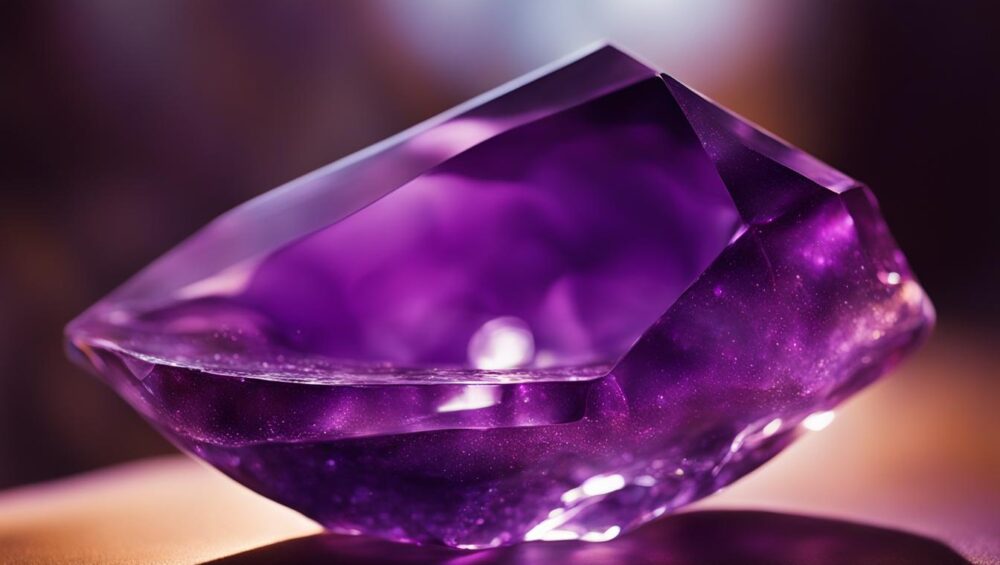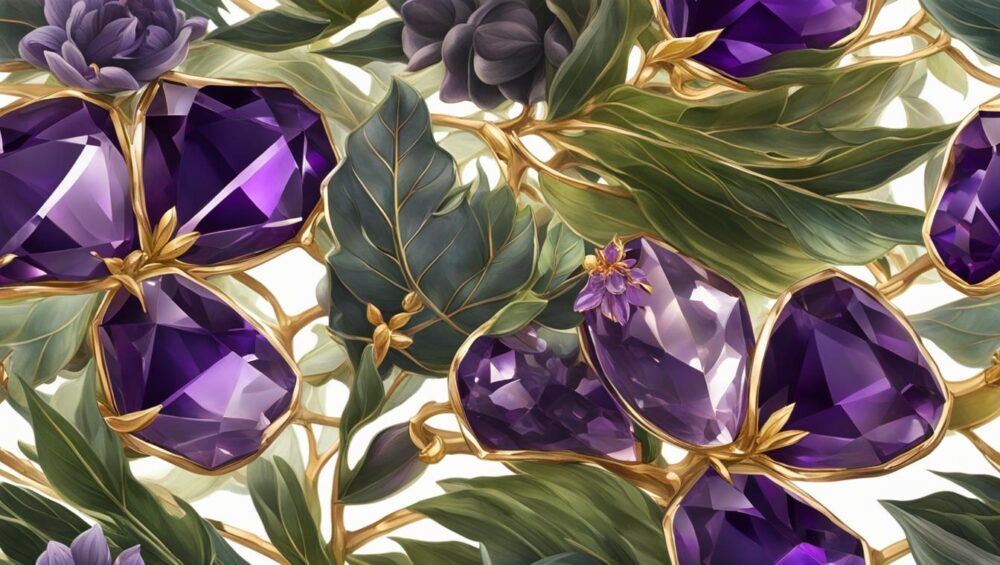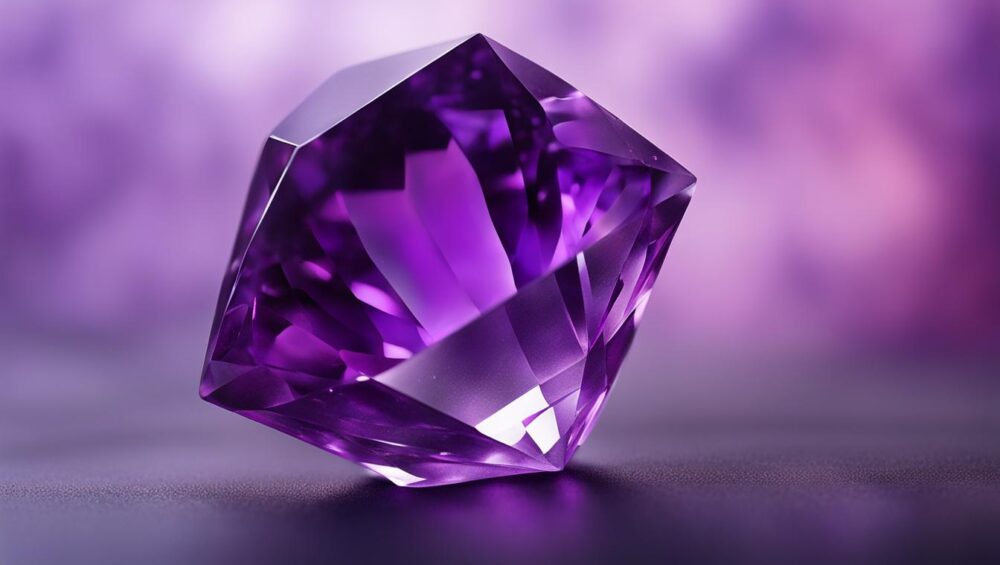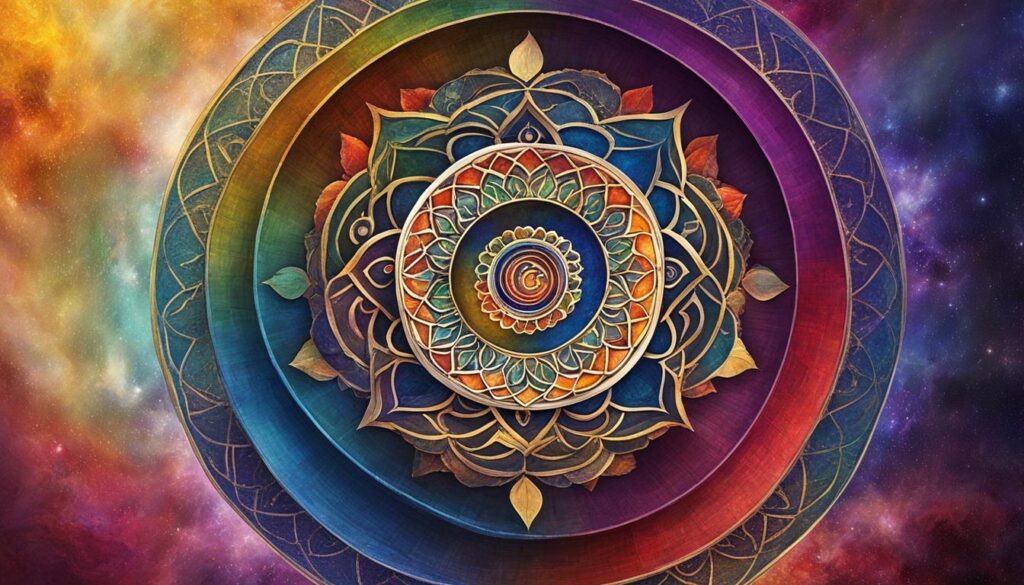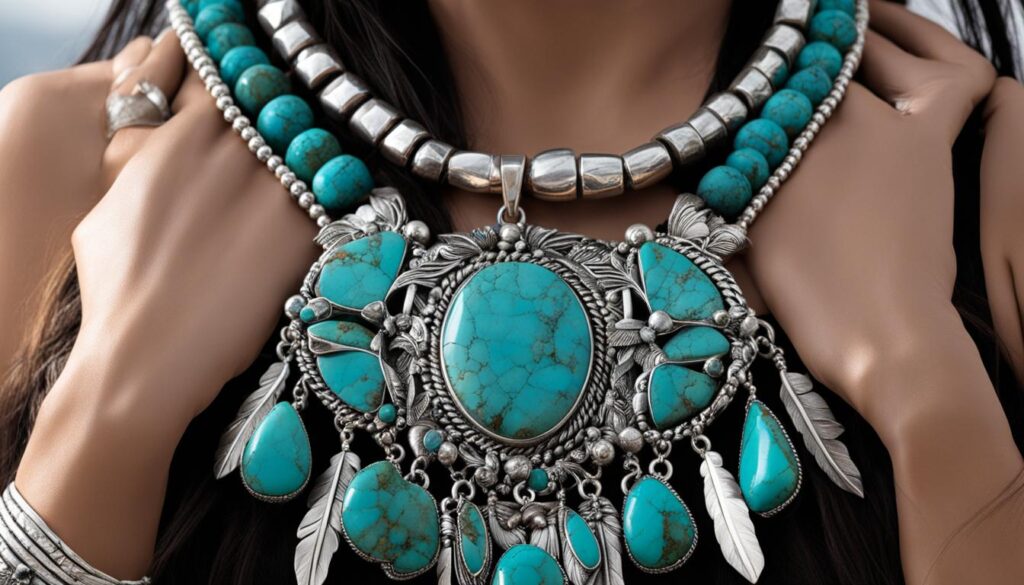Turquoise is a versatile color that can be paired with various other colors to create stunning and vibrant color schemes. Whether you are designing a room or putting together an outfit, knowing what colors go well with turquoise can help you create a stylish and harmonious look. In this article, we will explore different color combinations that perfectly complement turquoise, allowing you to achieve the desired aesthetic for your space or wardrobe.
Key Takeaways:
- Turquoise is a versatile color that can be paired with various other colors to create stunning color schemes.
- Pairing turquoise with gray creates a cool and calming color scheme.
- Turquoise and coral create a bold and vibrant color palette.
- Turquoise and yellow create a bright and cheerful color scheme.
- The combination of turquoise and navy blue creates a classic and sophisticated look.
Turquoise and Gray: A Cool and Calming Color Scheme
The combination of turquoise and gray creates a cool and calming color scheme that is perfect for creating a serene and soothing atmosphere. Turquoise adds a pop of vibrant color, while gray provides a neutral and balanced backdrop. This color combination works well in bedrooms, bathrooms, and living rooms, creating a tranquil and relaxing environment.
If you’re looking to create a space that exudes tranquility and promotes a sense of calm, incorporating a turquoise and gray color scheme can be the perfect choice. The visual contrast between the vibrant turquoise and the cool gray adds visual interest to the space while maintaining a sense of balance and harmony.
“The combination of turquoise and gray creates a serene and soothing atmosphere that is both visually appealing and calming. It’s a versatile color combination that can work well in various settings, from modern to traditional.”
When using turquoise and gray in your design, consider using turquoise as the accent color, with gray serving as the primary color for walls, furniture, or large surfaces. This allows the turquoise to stand out and add a touch of vibrancy without overwhelming the space.
Incorporate turquoise through accessories, such as pillows, curtains, or artwork, to bring a burst of color to the room. To enhance the calming effect, opt for lighter shades of gray and turquoise, creating a soft and gentle ambiance.
Here’s an example of how you can incorporate a turquoise and gray color scheme in a bedroom:
| Element |
Turquoise |
Gray |
| Walls |
– |
Light gray |
| Bedding |
Turquoise comforter |
Gray sheets |
| Accent pillows |
Turquoise throw pillows |
Gray lumbar pillow |
| Window treatments |
Turquoise curtains |
– |
| Furniture |
– |
Gray upholstered bed frame |
| Rug |
– |
Gray shag rug |
| Accessories |
Turquoise table lamp |
– |
By incorporating a turquoise and gray color scheme in your space, you can create a cool and calming environment that promotes relaxation and serenity. Experiment with different shades of turquoise and gray to find the perfect balance that suits your aesthetic preferences and complements your space’s overall design.
Turquoise and Coral: A Bold and Vibrant Color Palette
When it comes to creating a lively and energetic atmosphere, the combination of turquoise and coral is a match made in color heaven. This bold and vibrant color palette effortlessly brings a refreshing feel and adds warmth and brightness to any space or outfit.
Turquoise, with its vibrant and refreshing nature, invigorates the senses and creates a lively ambiance. Coral, on the other hand, adds a touch of warmth and brightness, complementing turquoise perfectly. Together, they create a powerful visual impact that catches the eye and sparks excitement.
This striking color combination is ideal for accent pieces and accessories, allowing you to incorporate a pop of color and visual interest into your space or outfit. Consider using turquoise and coral throw pillows, artwork, or accessories to instantly elevate your interior design or fashion ensemble.
Whether you’re looking to create a vibrant living room, a cheerful bedroom, or a playful wardrobe, the turquoise and coral color palette has you covered. Embrace this dynamic duo and let your creativity shine!
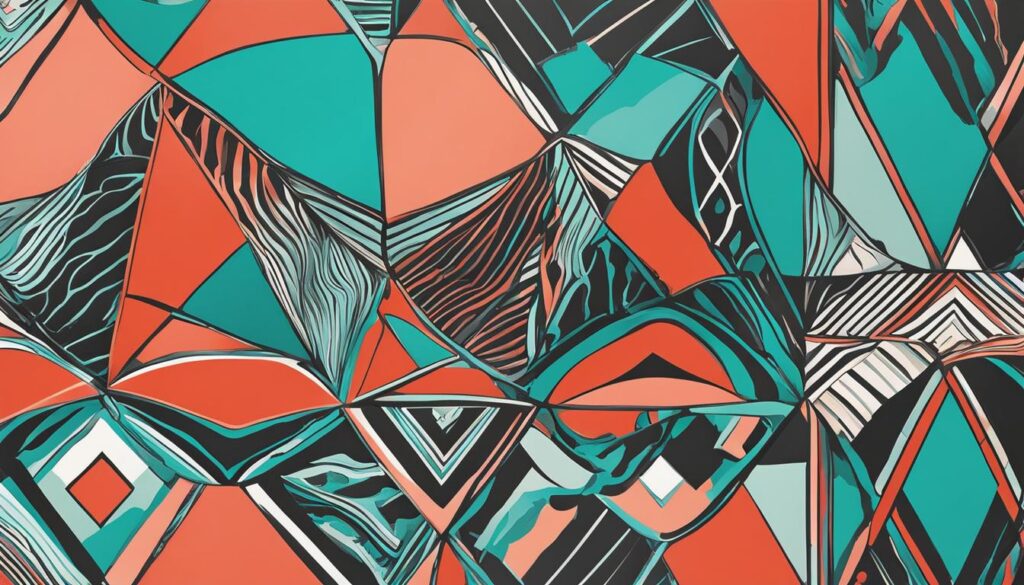
Turquoise and Yellow: A Bright and Cheerful Color Scheme
The combination of turquoise and yellow creates a bright and cheerful color scheme that is perfect for adding a burst of energy and positivity to any space or outfit. Turquoise brings a sense of tranquility and harmony, while yellow adds a vibrant and sunny touch.
This color combination is great for kitchens, dining rooms, and outdoor spaces, creating a lively and welcoming environment.

When designing a kitchen, consider using turquoise as the main color for cabinets and yellow as an accent color for backsplashes or bar stools. This combination will create a fresh and vibrant space that will make cooking and gathering with family and friends a joyful experience.
“The combination of turquoise and yellow brings a sense of happiness and warmth to any dining room. Imagine having a turquoise dining table paired with yellow chairs. It creates a fun and playful atmosphere that will make every meal a celebration.” – Emily Thompson, Interior Designer
For outdoor spaces, such as a patio or garden, turquoise and yellow can be used to create a lively and inviting atmosphere. Consider using turquoise for the furniture pieces and yellow for cushions and accessories. This combination will transform your outdoor space into a vibrant oasis where you can relax and enjoy the beauty of nature.
Benefits of the Turquoise and Yellow Color Scheme:
- Creates a bright and cheerful atmosphere
- Adds energy and positivity to any space or outfit
- Brings a sense of tranquility and harmony
- Provides a vibrant and sunny touch
By incorporating turquoise and yellow into your color scheme, you can create a space or outfit that exudes happiness and joy. Whether it’s a kitchen, dining room, or outdoor space, this combination is sure to uplift your spirits and create a vibrant and welcoming environment.
| Turquoise |
Yellow |
| Symbolizes tranquility |
Symbolizes happiness |
| Creates a sense of harmony |
Creates a sense of warmth |
| Associated with the sea and sky |
Associated with the sun |
Turquoise and Navy Blue: A Classic and Sophisticated Color Palette
When it comes to creating a timeless and elegant look, the combination of turquoise and navy blue is a classic choice. This color palette effortlessly blends freshness and vibrancy with depth and richness, resulting in a sophisticated aesthetic that never goes out of style.
Turquoise, with its refreshing and vibrant hue, adds a pop of color that immediately catches the eye. Whether used as an accent or a dominant shade, turquoise brings a sense of energy and liveliness to any space or outfit. It evokes a feeling of serenity and tranquility, reminiscent of tropical waters and clear skies.
On the other hand, navy blue provides a foundation of depth and sophistication. Its rich and bold tones create a sense of stability and timelessness. Navy blue represents confidence and elegance, making it an excellent choice for formal spaces and occasions.
Combining turquoise and navy blue allows you to strike the perfect balance between freshness and sophistication, vibrant energy and timeless elegance. This color palette works effortlessly in various settings, from bedrooms and offices to formal living rooms and event spaces.
Bring Your Space to Life with Turquoise and Navy Blue
Looking to incorporate turquoise and navy blue into your space? Here are some ideas to get you started:
- Add turquoise and navy blue throw pillows to your sofa or bed for a touch of color and sophistication.
- Paint an accent wall in turquoise and complement it with navy blue furniture for a bold and stylish statement.
- Use turquoise and navy blue curtains or drapes to add depth and visual interest to your windows.
- Opt for turquoise and navy blue artwork or decorative pieces to tie the color scheme together effortlessly.
- Consider a turquoise and navy blue rug to anchor the space and create a cohesive look.
Remember, when using turquoise and navy blue, it’s essential to consider the balance of the two colors. Aim for a harmonious blend, ensuring one doesn’t overpower the other.
Whether you want to create a sophisticated bedroom, a stylish office, or an elegant living room, the turquoise and navy blue color palette is a perfect choice. Its timeless appeal and versatile nature make it a go-to option for those seeking a classic yet vibrant aesthetic.
Turquoise and Gold: A Luxurious and Glamorous Color Scheme
The combination of turquoise and gold creates a stunning and sophisticated color scheme that adds a touch of elegance and opulence to any space or outfit. Turquoise, with its vibrant and refreshing hue, brings a sense of energy and vibrancy. Gold, on the other hand, exudes richness and luxury, elevating the overall aesthetic.
When used together, turquoise and gold create a striking contrast that catches the eye and commands attention. The coolness of turquoise beautifully complements the warmth and luster of gold, creating a harmonious and balanced visual appeal.
This color combination is particularly well-suited for formal spaces, such as dining rooms and living rooms, where a sense of grandeur and glamour is desired. The combination of turquoise and gold can be incorporated into various elements of the room, from furnishings and accessories to wall paint and decorative accents.
| Turquoise and Gold: Key Features |
| The contrasting combination of cool turquoise and warm gold creates a visually captivating and dramatic effect. |
| The vibrant turquoise adds freshness and energy, while the gold brings a sense of richness and luxury. |
| This color scheme works well in formal settings, evoking a sense of grandeur and opulence. |
| Turquoise and gold can be incorporated into various elements of the room, from furnishings and accessories to wall paint and decorative accents. |
Whether you choose to use turquoise and gold in a room or in your wardrobe, this luxurious and glamorous color scheme is sure to make a statement. Embrace the richness of gold and the vibrancy of turquoise to create a space or outfit that exudes sophistication and style.
Turquoise and White: A Crisp and Clean Color Combination
The combination of turquoise and white creates a crisp and clean color combination that is perfect for creating a fresh and modern look. Turquoise, with its vibrant and invigorating hue, adds a pop of color that instantly brightens any space or outfit. Meanwhile, white provides a clean and minimalist backdrop, creating a sense of simplicity and sophistication.
Whether you’re designing a room or putting together a stylish outfit, the turquoise and white color combination offers endless possibilities. The contrast between these two colors creates a visually appealing aesthetic that is both eye-catching and elegant.
“The combination of turquoise and white is like a breath of fresh air. It brings a sense of freshness and purity to any space or outfit, making it the perfect color combination for a clean and modern look.” – Interior Designer, Rachel Stevens
One of the key advantages of using turquoise and white together is their versatility. This color combination can be applied to various design styles, from contemporary to coastal, and is suitable for any room in the house. Whether you want to create a serene bedroom, a vibrant living room, or a sleek kitchen, turquoise and white can be tailored to suit your desired aesthetic.
In addition to interior design, the turquoise and white combination is also popular in fashion. From casual summer outfits to elegant evening ensembles, this color palette can be easily incorporated into any wardrobe. The vibrant pop of turquoise against a clean white background adds a touch of brightness and energy, making it a great choice for both casual and formal wear.
To give you some inspiration, here’s a table showcasing different ways to incorporate the turquoise and white color combination:
| Room/Outfit |
Turquoise and White Elements |
Description |
| Living Room |
Turquoise accent wall
White furniture and curtains |
Create a modern and vibrant living space with a bold turquoise accent wall and complementing white furniture and curtains. |
| Bathroom |
Turquoise mosaic tiles
White fixtures and towels |
Add a touch of luxury to your bathroom with turquoise mosaic tiles and crisp white fixtures and towels. |
| Outdoor Patio |
Turquoise cushions and umbrellas
White patio furniture |
Create a relaxing and inviting outdoor space with turquoise cushions and umbrellas, paired with sleek white patio furniture. |
| Summer Dress |
Turquoise sundress
White sandals and accessories |
Stay cool and stylish in a turquoise sundress paired with white sandals and accessories for a fresh summer look. |
| Office Space |
Turquoise desk accessories
White desk and shelves |
Create a productive and organized workspace with turquoise desk accessories against a clean white desk and shelves. |
As you can see, the turquoise and white color combination offers endless possibilities for both interior design and fashion. Whether you prefer a bold and vibrant look or a more subtle and calming ambiance, this color pairing allows you to create a stunning and cohesive aesthetic.
Finding Your Perfect Match: What Colors Does Turquoise Go With?
Turquoise is a versatile color that can be paired with a wide range of other colors to create various color schemes and aesthetics. Whether you prefer a cool and calming atmosphere or a bold and vibrant look, there are plenty of options when it comes to pairing turquoise with other colors. By experimenting with different combinations and finding your perfect match, you can create stylish and visually appealing spaces or outfits that reflect your unique style and personality.
When it comes to creating a cool and calming atmosphere, turquoise pairs beautifully with gray. The combination of these two colors creates a serene and soothing color scheme that is perfect for bedrooms, bathrooms, and living rooms. For a bold and vibrant look, turquoise and coral make a dynamic duo. The contrast between the refreshing turquoise and the warm coral creates an energetic and lively color palette, ideal for accent pieces and accessories.
If you’re looking to add a burst of energy and positivity, try combining turquoise with yellow. This bright and cheerful color scheme works wonders in kitchens, dining rooms, and outdoor spaces. For a classic and sophisticated look, turquoise and navy blue are a perfect match. The combination of these two colors exudes elegance and is ideal for bedrooms, offices, and formal spaces.
For a touch of luxury and glamour, pairing turquoise with gold is a winning choice. The vibrant turquoise adds a refreshing feel, while the gold brings a sense of richness and opulence. This color combination is perfect for creating a lavish and glamorous ambiance in formal spaces. Lastly, if you’re aiming for a fresh and modern look, turquoise and white are a crisp and clean combination. The vibrant turquoise adds a pop of color, while the minimalist white backdrop creates a sense of brightness and simplicity that works well in any space or outfit.
FAQ
What colors does turquoise go with?
Turquoise is a versatile color that can be paired with a wide range of other colors. Some popular color combinations include turquoise and gray, turquoise and coral, turquoise and yellow, turquoise and navy blue, turquoise and gold, and turquoise and white.
What are some turquoise color combinations?
Turquoise can be combined with various colors to create different color schemes. Some popular turquoise color combinations include turquoise and gray, turquoise and coral, turquoise and yellow, turquoise and navy blue, turquoise and gold, and turquoise and white.
What are some complementary colors for turquoise?
Complementary colors for turquoise include gray, coral, yellow, navy blue, gold, and white.
What is a turquoise and gray color scheme?
A turquoise and gray color scheme is a cool and calming combination that creates a serene and soothing atmosphere. Turquoise adds a pop of vibrant color, while gray provides a neutral and balanced backdrop.
What is a turquoise and coral color palette?
A turquoise and coral color palette creates a bold and vibrant look. Turquoise brings a refreshing and vibrant feel, while coral adds warmth and brightness.
What is a turquoise and yellow color scheme?
A turquoise and yellow color scheme is bright and cheerful, adding a burst of energy and positivity. Turquoise brings a sense of tranquility and harmony, while yellow adds a vibrant and sunny touch.
What is a turquoise and navy blue color palette?
A turquoise and navy blue color palette is classic and sophisticated, perfect for creating a timeless and elegant look. Turquoise adds a refreshing and vibrant touch, while navy blue brings depth and richness.
What is a turquoise and gold color scheme?
A turquoise and gold color scheme is luxurious and glamorous, adding a touch of elegance and opulence. Turquoise adds a vibrant and refreshing feel, while gold brings a sense of richness and luxury.
What is a turquoise and white color combination?
A turquoise and white color combination is crisp and clean, creating a fresh and modern look. Turquoise adds a pop of vibrant color, while white provides a clean and minimalist backdrop.
How can I create stylish color schemes with turquoise?
By experimenting with different combinations and finding your perfect match, you can create stylish and visually appealing color schemes with turquoise. Whether you prefer a cool and calming atmosphere or a bold and vibrant look, there are plenty of options when it comes to pairing turquoise with other colors.
Source Links
